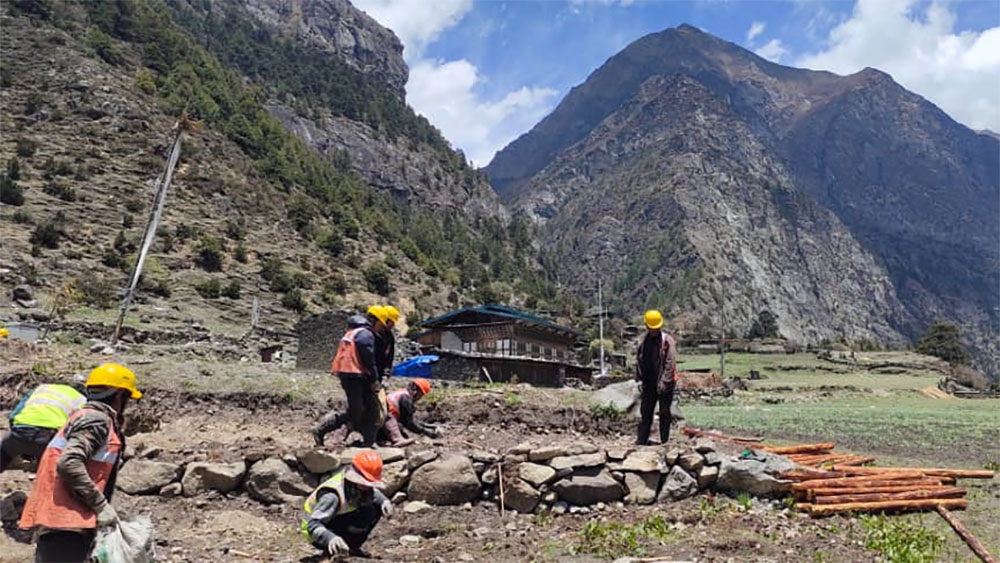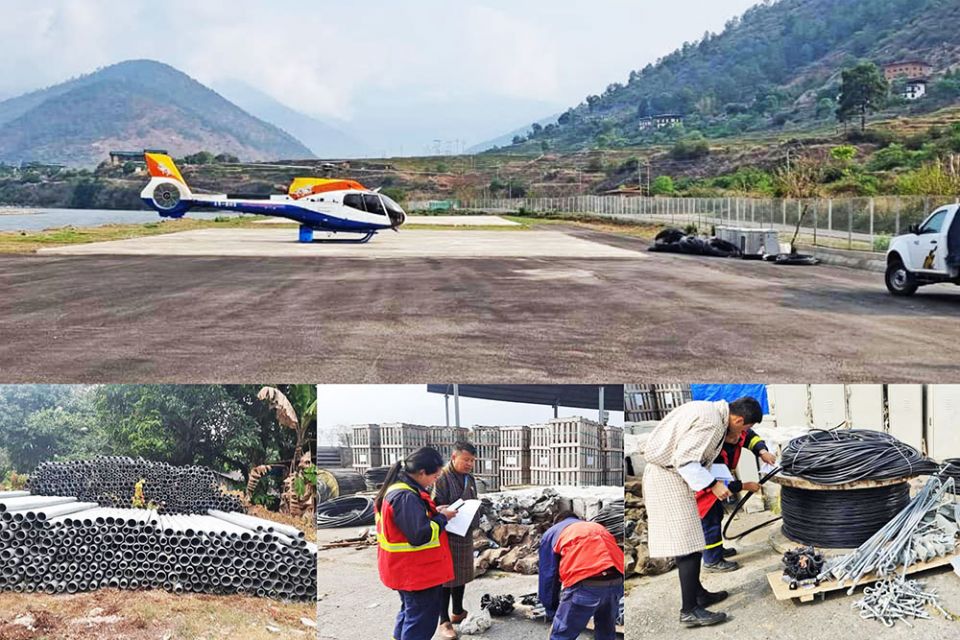
Shangsa village in Lunana is set to benefit from clean and reliable energy by August this year.
The work is underway to install a solar system for the 10 households of the village.
Shangsa will be the second village out of thirteen villages in Lunana to receive power. Ramina village, which is connected to a road, received hydroelectricity last year.
The Ministry of Energy and Natural Resources found it technically unfeasible to provide hydropower throughout Lunana due to challenges related to extending the electricity grid. It is now exploring a solar system as an alternative to hydroelectricity.

Raw materials for solar system being airlifted by helicopter to Shangsa, Lunana
The contract to install the solar system in Shangsa was awarded last November. Underground cable laying, house wiring, ground levelling, and the construction of footings and control room have been completed. The project is now waiting for the supply of solar modules, batteries, and other components for installation.
Shangsa is one of the remotest villages in Lunana. Located at about 3,400 metres above sea level, it is about eight days on foot from the nearest road point at Tonshina in Laya gewog. Currently, like other villages in Lunana, Shangsa has only solar lighting, which is capable of lighting homes and charging phones.
“People in Shangsa are excited at the prospect of clean energy, and we remain grateful,” Lunana Gup Kaka said. “However, electrification in Lunana has been slow, with only a few pockets benefiting, representing only about five percent of the entire region.”
He said that while all 20 dzongkhags and 204 gewogs have been electrified and have road access, the majority of Lunana is still in darkness. He added, “There is an urgent need for all of Lunana to get access to electricity due to health concerns for women and children from their exposure to firewood smoke and the hardship of collecting firewood from the forest, which often takes days of walking.”
Bhutan has achieved almost 99.9 percent of electrification, but Lunana gewog still does not have access to the grid, being one of the remotest gewogs in the country without road access, except for Ramina.
An official from the Department of Energy said electrifying Lunana was challenging for several reasons. He said the lack of road made transportation expensive, requiring airlifting by helicopter, which is impractical for heavy loads.
Moreover, helicopter services were costly and highly dependent on weather conditions, with a limited operational period each year. The official said, “Most solar components need to be imported, causing delays due to external factors. Moreover, finding local workers is difficult as many residents are engaged in cordyceps collection.”
The 30 kilowatt-peak (kWp) solar system in Ramina will be off-grid, meaning it is not connected to the national grid. It will have a battery to store electricity for use at night.
“The energy department is continuously exploring funds from various funding agencies for the electrification of the remaining 12 villages,” the official said.
At the same time, the energy department is exploring funding support to develop a mini hydro plant in Lunana, which could potentially reduce reliance on batteries for storage and enhance the reliability of supply.
The solar system in Ramina is funded by Bhutan for Life. The Nu 19.78 million project is implemented by the Department of Energy.
Meanwhile, Tshojong village, where the film Yak in the Classroom was shot, got a five kWp off-grid solar plant in 2022 with funding support from a couple, Mr and Mrs Carol Phelps.












